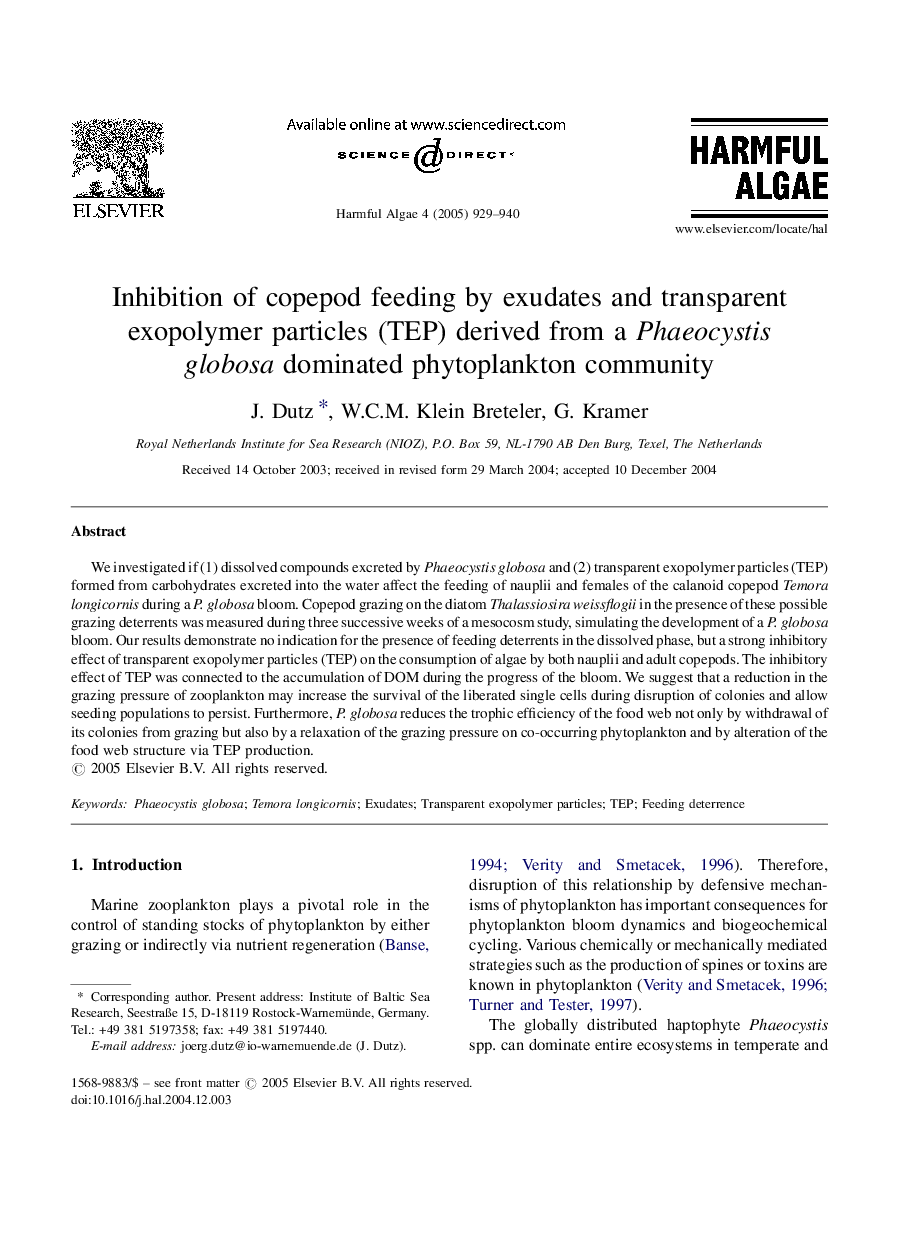| Article ID | Journal | Published Year | Pages | File Type |
|---|---|---|---|---|
| 9482577 | Harmful Algae | 2005 | 12 Pages |
Abstract
We investigated if (1) dissolved compounds excreted by Phaeocystis globosa and (2) transparent exopolymer particles (TEP) formed from carbohydrates excreted into the water affect the feeding of nauplii and females of the calanoid copepod Temora longicornis during a P. globosa bloom. Copepod grazing on the diatom Thalassiosira weissflogii in the presence of these possible grazing deterrents was measured during three successive weeks of a mesocosm study, simulating the development of a P. globosa bloom. Our results demonstrate no indication for the presence of feeding deterrents in the dissolved phase, but a strong inhibitory effect of transparent exopolymer particles (TEP) on the consumption of algae by both nauplii and adult copepods. The inhibitory effect of TEP was connected to the accumulation of DOM during the progress of the bloom. We suggest that a reduction in the grazing pressure of zooplankton may increase the survival of the liberated single cells during disruption of colonies and allow seeding populations to persist. Furthermore, P. globosa reduces the trophic efficiency of the food web not only by withdrawal of its colonies from grazing but also by a relaxation of the grazing pressure on co-occurring phytoplankton and by alteration of the food web structure via TEP production.
Keywords
Related Topics
Life Sciences
Agricultural and Biological Sciences
Aquatic Science
Authors
J. Dutz, W.C.M. Klein Breteler, G. Kramer,
